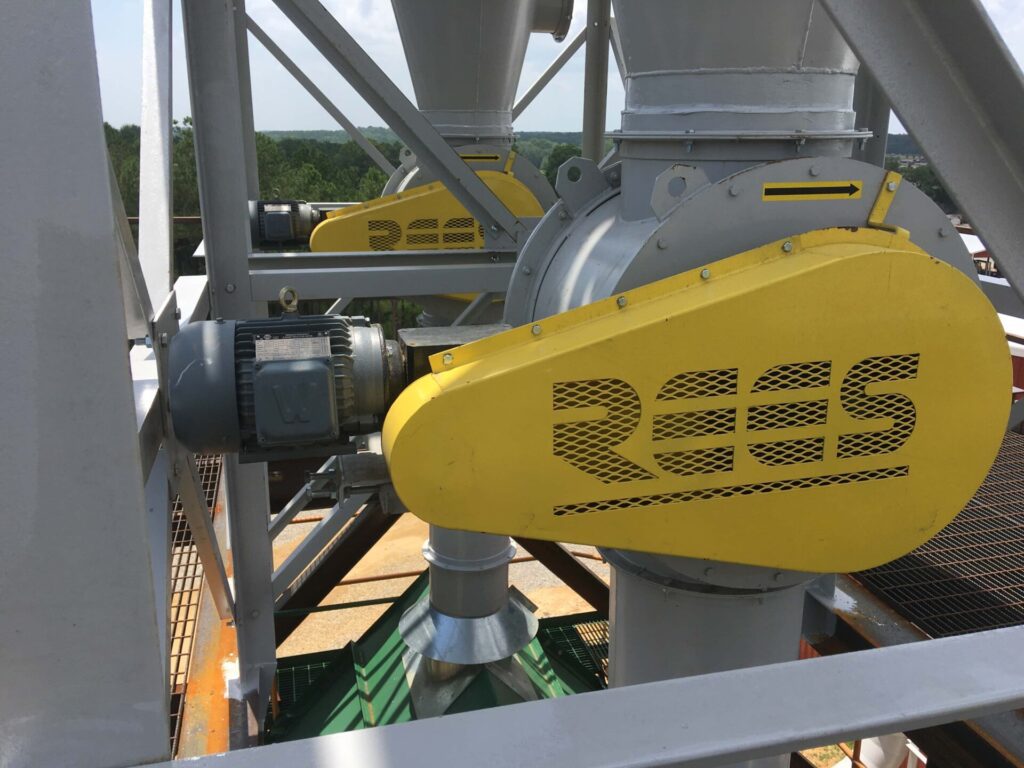
Industrial dust collection systems play a vital role in maintaining a clean and safe working environment, protecting workers’ health, and complying with regulations. With various types of dust collection systems on offer from industrial dust collection systems fabricators like REES, it can be tricky to determine which system is best suited for your facility. We’ll briefly explore the factors to consider when choosing the right dust collection system for your specific needs, so that you can be better informed on which type of system will be best suited to your plant’s needs.
Your Dust Type and Characteristics
Understanding the properties of the dust generated in your facility is crucial in selecting the appropriate dust collection system. Consider the following factors:
- Particle Size: The size of the dust particles will determine the type of filter media and the dust collector’s efficiency. Finer particles may require specialized filters, such as HEPA or cartridge filters, to capture them effectively.
- Dust Volume: The amount of dust generated will impact the size and capacity of your dust collection system. A higher dust volume may necessitate a more extensive and powerful system.
- Dust Composition: The composition of the dust, whether combustible, abrasive, or chemically reactive, will affect the materials and components used in your dust collection system. For example, corrosive dust may require a dust collector with corrosion-resistant materials.
Assess Your Facility’s Space and Layout
The available space in your facility and its layout will influence the type and size of the dust collection system you can install. Consider the following aspects:
- Space Constraints: A compact facility may require a smaller, space-efficient dust collector, such as a cartridge collector, while larger facilities may be able to accommodate more extensive systems.
- Ductwork and Ventilation: Evaluate your facility’s existing ductwork and ventilation system to determine if modifications or upgrades are necessary to accommodate the new dust collection system. Proper ductwork design is essential for optimal system performance and energy efficiency.
- Centralized vs. Decentralized Systems: Consider whether a centralized dust collection system, where a single unit services multiple points of dust generation, or a decentralized system, with multiple collectors placed near individual dust sources, would be more suitable for your facility’s layout.
Calculate System Airflow and Static Pressure Requirements
The airflow and static pressure requirements of your dust collection system depend on the dust volume generated, the number of dust sources, and the ductwork layout. Accurately calculating these requirements will help you select the right dust collector size and fan capacity to efficiently capture and transport dust particles.
Factor in Energy Efficiency and Maintenance
Energy efficiency and ease of maintenance are crucial considerations when selecting a dust collection system. Look for energy-efficient features, such as variable frequency drives (VFDs), which can reduce energy consumption and operating costs. Additionally, opt for systems with easy access to filters and components for simplified maintenance and reduced downtime.
Comply with Regulations and Industry Standards
Ensure that your chosen dust collection system complies with applicable regulations and industry standards, such as OSHA and NFPA guidelines for combustible dust and indoor air quality. Compliance with these regulations will protect your workers’ health, minimize potential fines, and prevent costly shutdowns.
Consult an Expert
Dust collection isn’t always an easy thing to figure out without expert help. If your plant or business is in need of a new dust collection system, or your current dust collection system is in need of repair, get in touch with the proven experts at REES.

